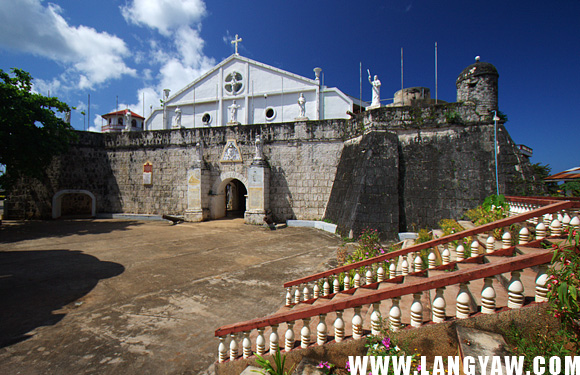

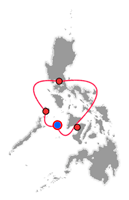
Cuyo is in blue In October of 2006, I visited the remote islands of Cuyo and Culion in Palawan for a photography assignment and passed Negros and Iloilo in transit. This is my account of that journey.
 To put into context the many Spanish colonial era fortifications that can still be seen around the coasts of Luzon and the Visayas, I’ve written a more detailed 3-part post at simbahan.net. A summarized version can also be found in this blog.
To put into context the many Spanish colonial era fortifications that can still be seen around the coasts of Luzon and the Visayas, I’ve written a more detailed 3-part post at simbahan.net. A summarized version can also be found in this blog.
This is the 14th of a series I have seen photos of the fortress-church of Cuyo in books but the first time I saw it, cara y cara, and I was struck speechless. The photos don’t give you an idea of size and immensity unless you have a reference like a person within the image to provide scale. But looking at it, wow, its surreal. This was what I have come for in this remote island and its hard to imagine that in such a place, a very solid, massive and impressive structure was built here.
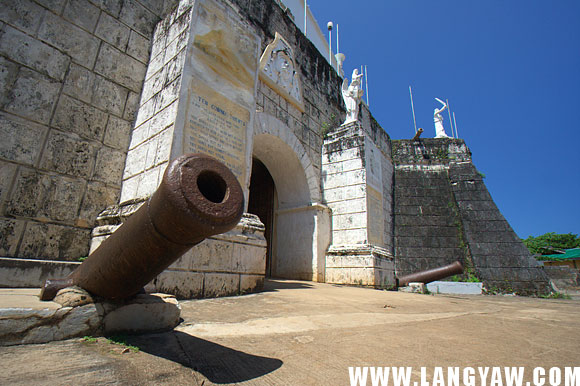
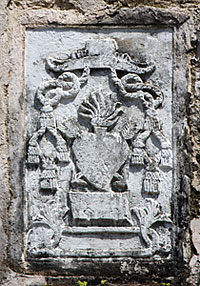
Palawan and its outlying islands were given to the Augus-tinian Recollects to administer. It was in Cuyo that the religious order first arrived in 1622 where they then fanned out to Agutaya and north Palawan, the Calamianes. At the height of the Maguindanao Sultanate under Sultan Kudarat, several raids were already done in these islands and based on records, between the 17th and 18th centuries, 43 Recollect missionaries met violent deaths.
The island, straddling between the Visayas and Palawan, is of strategic importance not only on economic but also on security considerations, thus, the reason that it has to be defended. The terrible conditions of the missions also prompted several priests to take it upon themselves to defend their towns. Here in Cuyo, the fortified church was first constructed in 1683 under the supervision of Rev. Juan de San Severo, OAR.
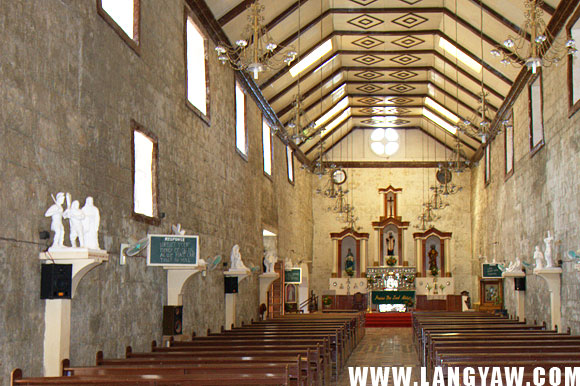
The nave of the church is quite narrow and doesn’t have a transept. Near the altar, original blue tiles, like those in Baclayon church (Bohol), called azulejos can still be found but most are broken and some parts missing. But I’m impressed as it’s altar frontal is still intact.


The fort is pentagonal in shape with four bastions. It is made of coral stones with walls more than a meter thick. The main portal faces the town which leads directly inside the church. A smaller entrance leads to a quadrangle.
Going inside the fortification complex, I was just disappointed that the original kumbento was no longer there. Instead, a modern concrete structure now stands. Rene Javellana, SJ, author of the wonderful book Fortress of Empire (of which this fortification series was named), wrote that it used to be parallel. Today, it runs in an L-shape: parallel and perpendicular to the church.
At the parapets, high above the walls, one can have a commanding view of the sea and neighboring islands. No wonder that this fortification complex was built in this area.
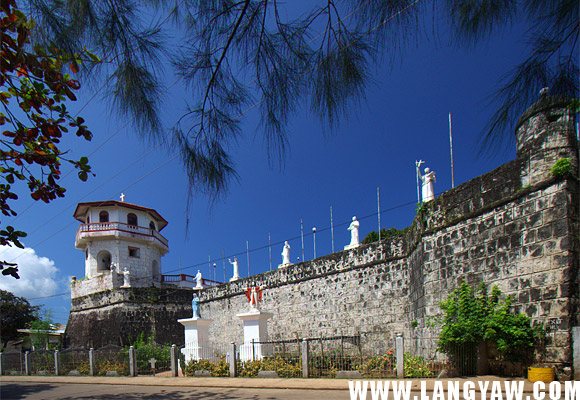
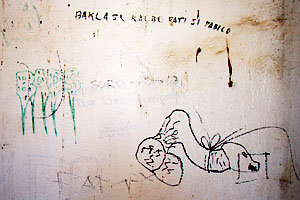
The fortified-church underwent a major renovation in 1827 and during this time, the belfry was added at the far end, on one of the bastions. Even with its history and significance, I was just amused that inside, irreverent graffiti, besides the usual love quotes, can be found.
This fortress-church complex not only served to house the missionaries and protect the townspeople from pirates and slave raiders, it was also a fitting, if not an imposing structure that signified strength as the island was also the capital then of Palawan. This is really one of the impressive architectural legacies of the Augustinian Recollects in the country that I hope will be preserved for future generations.
—
Actualtests Pass4sure IBM Cisco Vmware Passguide HP Comptia ISC2 Checkpoint
nice place.it reminds me of judai`s movie “Ploning”.it was shot in Cuyo
Hi Carl, yep, unfortunately, the fortress-church was not shown. Inaabangan ko pa naman yun.
ayos talaga tong mga napupuntahan mo. yung interior ng simbahan na yan may similarity sa isang simbahan sa rizal. halos magkapareho talaga.
saan nga pala ginagamit ang mga pictures na to? magazines?
gusto ko rin mapuntahan yan. awesome pictures always master estan. hope to travel with you someday and learn a few tricks 😛
minsan na nag-cross paths na tayo kaso di pa alam hehe
thank very much for featuring our beloved fortress of cuyunos christianity.. matamang salamat..
very nice photos..naaalala ko pa nung sa cuyo pa kami nakatira, lagi naming inaakyat yang rooftop ng simbahan!i wish i could go back to cuyo..
Ganda nung Church but i hope they repaint that vandalized part 😐
me similarity sila ng Fort San Pedro when seen from above. para rin syang fortress…
@ANTON,fortress kaya yan. hehehe
…
simply amazing !
…